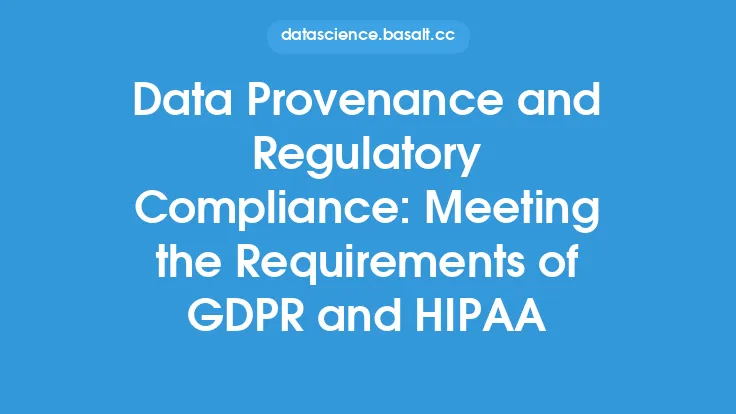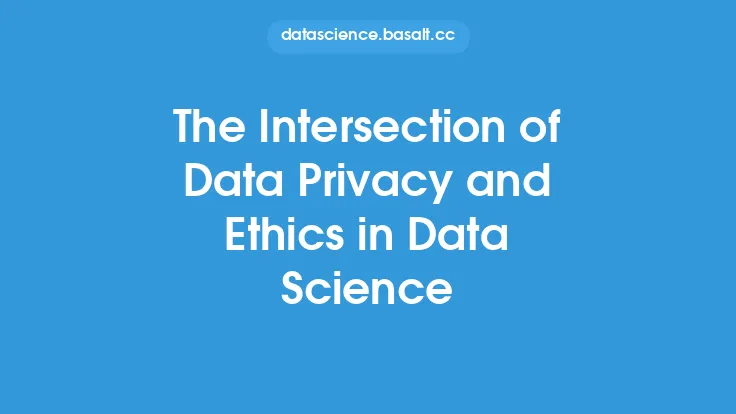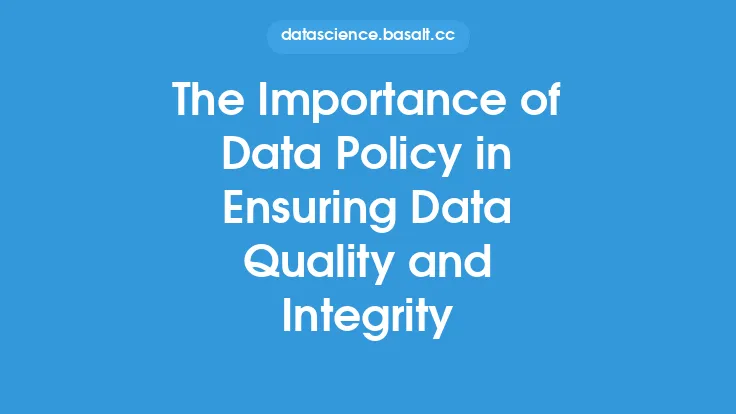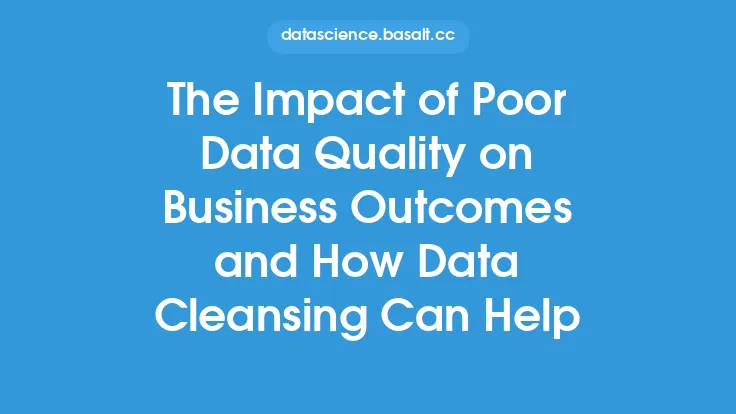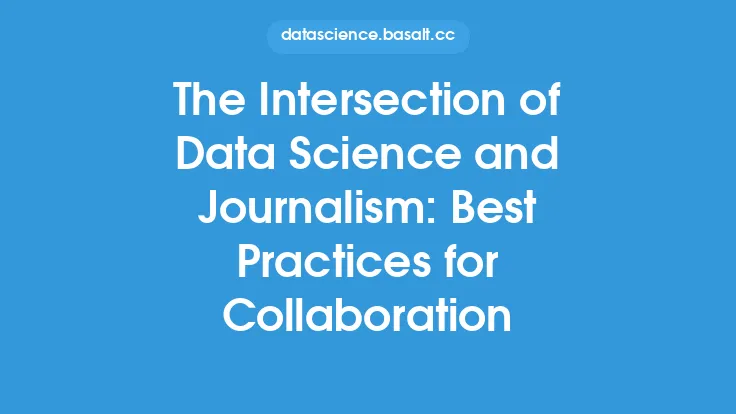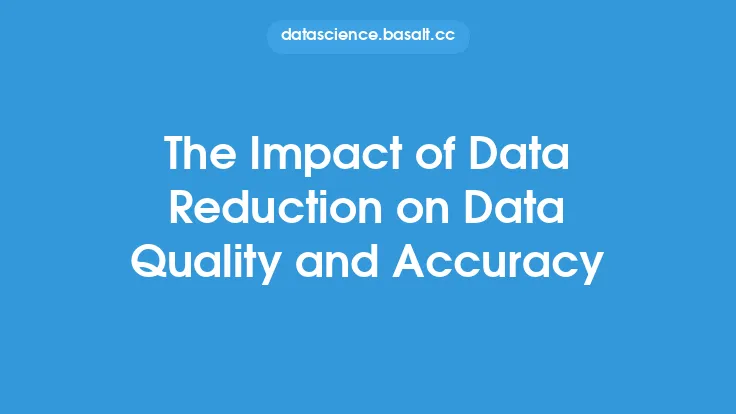Data compliance and data quality are two interconnected aspects of data governance that are crucial for organizations to manage their data effectively. While data compliance refers to the adherence to regulatory requirements and industry standards for data management, data quality pertains to the accuracy, completeness, and reliability of the data itself. The intersection of these two concepts is critical, as high-quality data is essential for ensuring compliance with regulatory requirements, and compliance is necessary for maintaining the integrity and trustworthiness of the data.
Introduction to Data Quality
Data quality is a multifaceted concept that encompasses various dimensions, including accuracy, completeness, consistency, timeliness, and relevance. High-quality data is essential for informed decision-making, risk management, and compliance with regulatory requirements. Data quality issues can arise from various sources, such as human error, system glitches, or inadequate data validation. To ensure data quality, organizations must implement robust data governance policies, procedures, and controls that cover data collection, processing, storage, and dissemination.
The Impact of Data Quality on Data Compliance
Data quality has a direct impact on data compliance, as poor-quality data can lead to non-compliance with regulatory requirements. For instance, inaccurate or incomplete data can result in incorrect reporting, which can lead to fines, penalties, and reputational damage. Moreover, data quality issues can compromise the integrity of the data, making it difficult to demonstrate compliance with regulatory requirements. On the other hand, high-quality data can facilitate compliance by providing a solid foundation for reporting, auditing, and risk management.
Data Validation and Verification
Data validation and verification are critical components of data quality management that are essential for ensuring data compliance. Data validation involves checking the data against predefined rules and constraints to ensure its accuracy and completeness. Data verification, on the other hand, involves confirming the data against external sources or references to ensure its authenticity. Organizations must implement robust data validation and verification processes to ensure that their data is accurate, complete, and reliable.
Data Lineage and Provenance
Data lineage and provenance are important concepts in data quality management that are relevant to data compliance. Data lineage refers to the origin, processing, and movement of data throughout its lifecycle, while data provenance refers to the documentation of the data's history, including its creation, modification, and dissemination. Understanding data lineage and provenance is essential for ensuring data compliance, as it provides a clear audit trail and helps to identify potential data quality issues.
Data Governance and Compliance Frameworks
Data governance and compliance frameworks are essential for ensuring the intersection of data compliance and data quality. These frameworks provide a structured approach to data management, including data quality, security, and compliance. Organizations must establish clear policies, procedures, and controls that cover data collection, processing, storage, and dissemination, as well as data quality, security, and compliance. A well-designed data governance and compliance framework can help organizations to ensure data quality, security, and compliance, while also facilitating regulatory reporting and auditing.
Technical Controls for Data Quality and Compliance
Technical controls, such as data encryption, access controls, and auditing, are essential for ensuring data quality and compliance. Data encryption, for instance, helps to protect sensitive data from unauthorized access, while access controls ensure that only authorized personnel can access and modify the data. Auditing and logging mechanisms provide a clear record of all data transactions, helping to detect and prevent data quality issues and compliance breaches. Organizations must implement robust technical controls to ensure the integrity, confidentiality, and availability of their data.
Monitoring and Reporting
Monitoring and reporting are critical components of data quality and compliance management. Organizations must establish clear metrics and key performance indicators (KPIs) to measure data quality and compliance, as well as reporting mechanisms to identify and address potential issues. Regular monitoring and reporting can help to detect data quality issues and compliance breaches, enabling organizations to take prompt corrective action.
Conclusion
In conclusion, the intersection of data compliance and data quality is critical for organizations to manage their data effectively. High-quality data is essential for ensuring compliance with regulatory requirements, and compliance is necessary for maintaining the integrity and trustworthiness of the data. Organizations must implement robust data governance policies, procedures, and controls that cover data collection, processing, storage, and dissemination, as well as data quality, security, and compliance. By understanding the interconnectedness of data compliance and data quality, organizations can establish a solid foundation for informed decision-making, risk management, and regulatory compliance.
